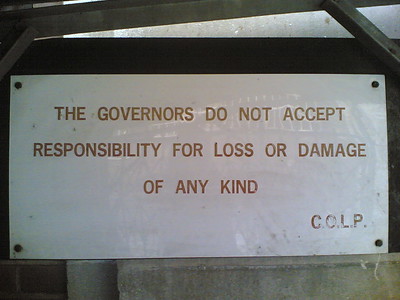Last week, the trustees at Eastern Gateway Community College authorized the administration there to request additional appropriations from the State of Ohio as needed until the college closes its doors on October 31. The rationale for the move is that EGCC has a lot of debts it will try to clear before shutting down.
While you could argue that a full year’s worth of cash for four months of operation doesn’t seem fair, it actually might be. When EGCC’s doors close for the last time, the analysis will likely show that the school’s trustees had ample opportunity to prevent the shutdown but did nothing for years after both the Higher Learning Commission and the US Department of Education surfaced serious concerns about the school’s operational strategy.
Instead of addressing those issues, the trustees pushed ahead with a focus on revenue, leaving the school’s academic staff to fend for itself. In many cases, decisions that could have improved EGCC’s academic and financial aid environments were overruled in favor of cash flow. And even when organizations like the HLC pressed EGCC on the school’s flagging academic environment, the trustees elevated the school’s CFO to be the institution’s interim and then permanent president.
You can trace the failures back to decisions the EGCC trustees made, and you can trace the trustees back to the Governor’s office. In Ohio, the governor appoints the trustees of public higher education institutions. The Governor is ultimately responsible for his or her appointees.
Ohio state law places the responsibility for the debts of an institution on the county in which the institution operates. That authority without responsibility for the state and may create responsibility with no authority for the county. That is the case in Jefferson County, where EGCC operates its main campus.
State should take responsibility for EGCC’s debts
There are other reasons to transfer debt obligations back to the state. Returning the debt to the state would put pressure on the Governor to ensure that his or her appointments will provide the necessary oversight to prevent these situations from occurring in the first place. Additionally, the Ohio Department of Higher Education should have stepped in when the HLC and the US Department of Education initially raised red flags about the school’s academic and financial irregularities.
Realistically, the ODHE should have stepped in when the EGCC Trustees first considered this “free college benefit” program. EGCC was a small, rural community college that was inappropriately resourced to provide these services when the trustees signed the agreement.
The Auditor of State should not have waited until after school agreed to end the free college benefit program to demand better financial monitoring.
Additionally, some institutions (including EGCC) have a district that includes more than one county, so assigning the debt to a single county is unjust. In this case, Jefferson County doesn’t have the economic means to address EGCC’s multi-million dollar debt.
In EGCC’s case, there are so many failures on the parts of so many agencies. Paying the bill should not be the Jefferson County residents’ responsibility.
Photo Credit: JG, via Flickr


























